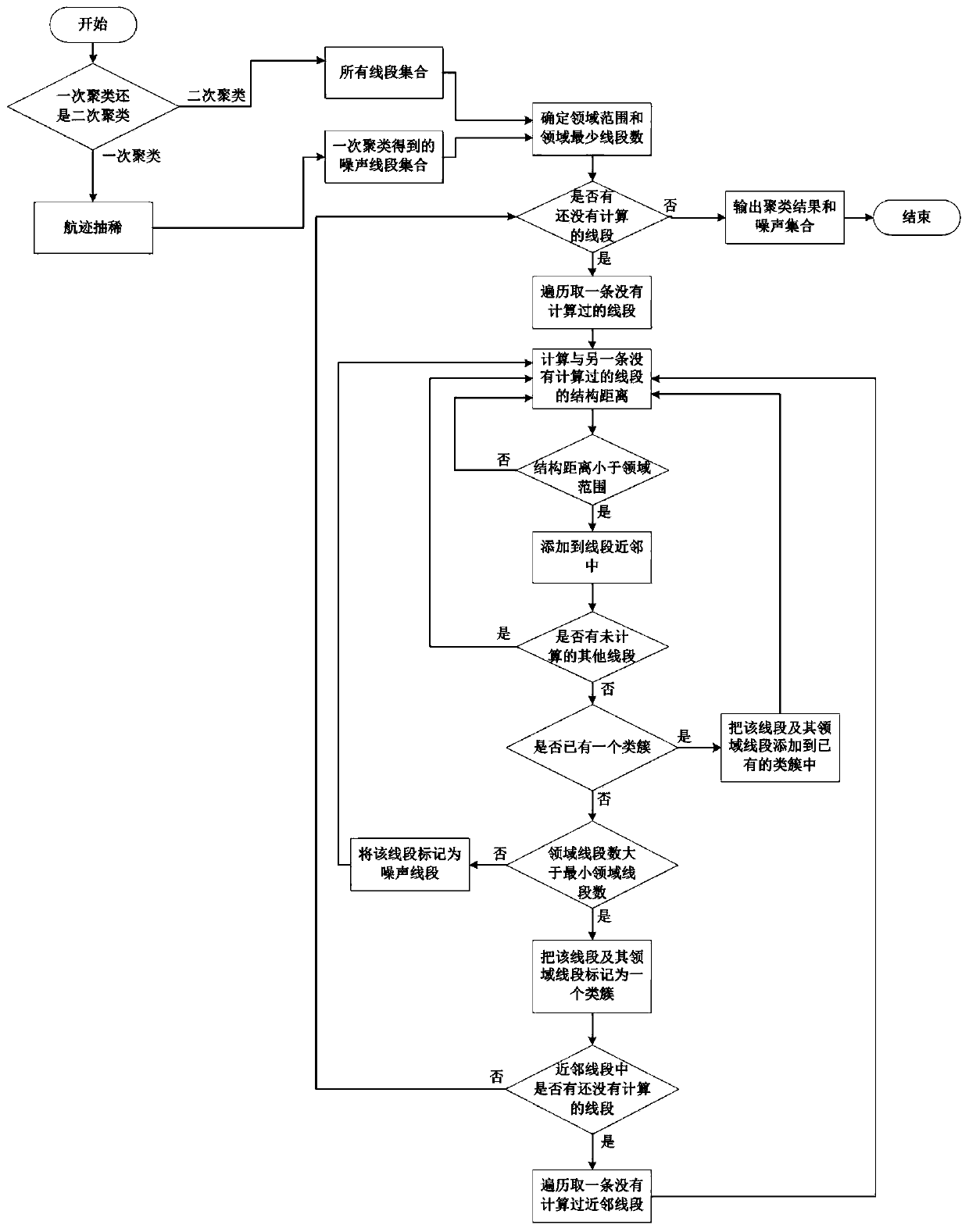Ship historical track rule extraction method based on unsupervised clustering
An unsupervised clustering and extraction method technology, applied in the field of unsupervised clustering based on the extraction of ship historical track rules, can solve problems such as false positives, split track segment correlation, and affect detection accuracy
- Summary
- Abstract
- Description
- Claims
- Application Information
AI Technical Summary
Problems solved by technology
Method used
Image
Examples
Embodiment Construction
[0047] Among the present invention, a kind of method for extracting the law of ship history track based on unsupervised clustering its operating steps are as follows;
[0048] Step 1. Obtain radar and AIS track point data, track preprocessing, and form a set of track line segments.
[0049] Step 2, calculation of line segment structure distance,
[0050] Step 3, clustering of track segments,
[0051] Step 4. Eliminate noise line segments from the set of track line segments obtained in step 1, and perform subsequent sea area grid training statistical processing according to track line segment clusters.
[0052] Such as figure 1 As shown, the method of historical track training is as follows:
[0053] Obtain historical track data, keep the track points whose positions are continuous and located in the target sea area, whose speed is greater than 0 knots and less than 50 knots, and whose heading is greater than or equal to 0 and less than 360, remove flying points and points o...
PUM
 Login to View More
Login to View More Abstract
Description
Claims
Application Information
 Login to View More
Login to View More - R&D
- Intellectual Property
- Life Sciences
- Materials
- Tech Scout
- Unparalleled Data Quality
- Higher Quality Content
- 60% Fewer Hallucinations
Browse by: Latest US Patents, China's latest patents, Technical Efficacy Thesaurus, Application Domain, Technology Topic, Popular Technical Reports.
© 2025 PatSnap. All rights reserved.Legal|Privacy policy|Modern Slavery Act Transparency Statement|Sitemap|About US| Contact US: help@patsnap.com



